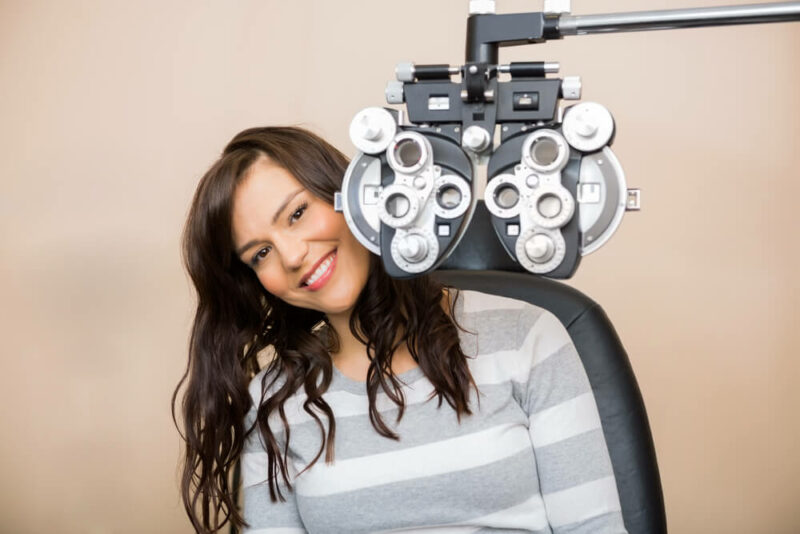Comprehensive Eye Care
What to Expect During Your Eye Exam?

Regular eye examinations are an important part of your eye care regimen. Frequently, vision problems may go undetected because there are no obvious symptoms. If there is a problem, early detection may help prevent future loss of vision.
During a comprehensive eye care examination, we review your past medical history and discuss your overall health. Any medications, past family vision history, and occupational or environmental exposure that may affect your vision will be discussed.
Your visual acuity will be assessed using a standard Snellen eye chart at a distance of 20 feet. You will be asked to read letters at a distance and up close.
Other tests such as baseline color, depth perception, and peripheral vision may be performed. Eye movement will also be assessed, as it is important that the eyes focus and move together for you to have clear vision.
A refraction will be performed to reveal any refractive error (optical defect) in the eye. Additionally, it will determine the lens power required to provide your best-corrected visual acuity.
During your visit, the eye doctor will examine the outer areas of the eye including the cornea, conjunctiva, eyelids, and surrounding structures. It is likely that your eyes will be dilated – as the evaluation of the lens, retina, and back of the eye are better seen through a dilated pupil.
The eye pressure will be checked using an instrument called a tonometer. Normal pressure in the eye is between 10 and 22 mm Hg. Patients with pressures over 22 are more likely to develop glaucoma. Typically, the higher the intraocular pressure, the greater the potential for having or developing the disease.
Once the evaluation has been completed and all information has been reviewed, your eye doctor may need to perform additional testing to clarify any uncertain findings. If so, your eye doctor will explain in detail the necessity for the extra test(s).
After all, tests have been performed and the information has been carefully reviewed, your Montgomery eye doctor will meet with you to discuss the results and together you will develop a treatment plan. The outcome of your comprehensive examination will determine how frequently you will need to return.
20/20 – What does it mean?
The upper number is the standard distance (20 feet) between an eye being tested and the eye chart. The lower number indicates that the tested eye can see the same small standard-sized letters or symbols as a”normal” eye at 20 feet. Not everyone has to be”20/20″ to have suitable vision. The criterion is used as a baseline standard for the practice of ophthalmology/optometry.
Patients at risk include but are not limited to those:
- with diabetes, hypertension, or a family history of ocular disease (e.g., glaucoma, macular degeneration)
- working in occupations that are highly demanding visually or eye hazardous
- taking prescription or nonprescription drugs with ocular side effects
- wearing contact lenses
- who have had eye surgery
- with other significant health concerns or conditions.
Recommended Examination Frequency For Pediatric Patients
| Patient Age | Examination Interval | |
|---|---|---|
| Asymptomatic/Risk-Free | At-Risk | |
| Birth to 24 months | At 6 months of age | By 6 months of age or as recommended |
| 2 to 5 years | At 3 years of age | At 3 years of age or as recommended |
| 6 to 18 years | Before first grade | Annually or as recommended |
| Children who wear glasses or contact lenses | Annually or as recommended | Annually or as recommended |
Recommended Examination Frequency Adult Patients
| Patient Age | Examination Interval | |
|---|---|---|
| Asymptomatic/Risk-Free | At-Risk | |
| 18 to 60 years | Every five years | Every one to two years or as recommended |
| 61 and older | Annually | Annually or as recommended |
| Adults who wear eyeglasses or contact lenses | Annually or as recommended | Annually or as recommended |
Eye Doctors in Birmingham and River Region
If you are looking to schedule an appointment with our eye doctors in the Birmingham and River Region schedule a consultation with us today!





